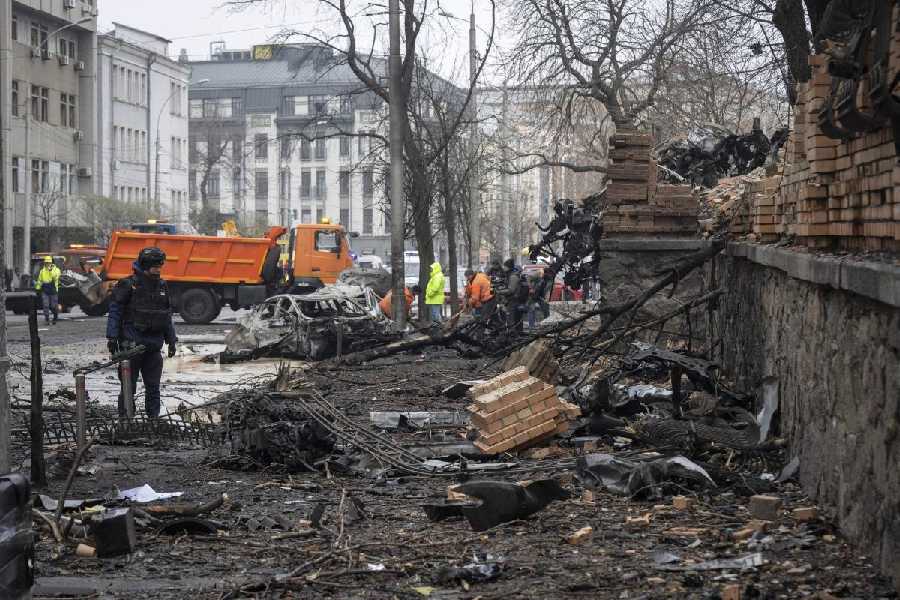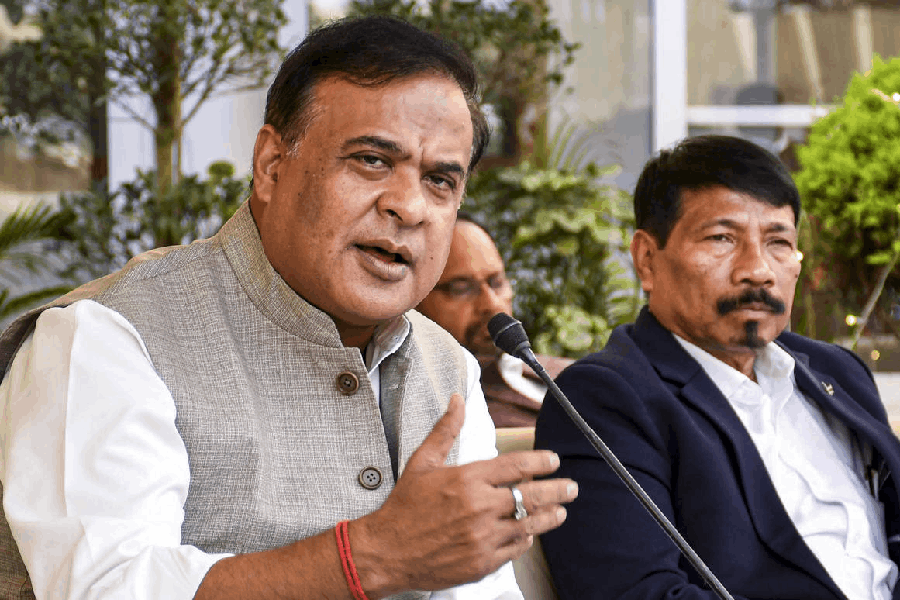The Reserve Bank of India hiked its leading interest rate by an aggressive 50 basis points as it stepped up its battle against inflation and economists say more increases are in the offing.
It was the second time in two months that the central bank has raised its key repurchase rate, known as the repo, to combat inflation which has been burning holes in consumers’ pockets, forcing many to cut back on spending.
Retail inflation hit an eight-year high of 7.8 per cent in April, spurred by rises in prices of fuel and vegetables to cooking oil and the bank is worried that wholesale prices which are riding at a three-decade peak of 15 per cent may feed through at the consumer level.
Inflation is also being stoked by soaring commodity prices and supply-chain bottlenecks stemming from Russia’s invasion of Ukraine and lockdowns as a result of China’s Covid-zero policy. “The war in Ukraine has led to globalisation of inflation,” said RBI Governor Shaktikanta Das.
Today's hike by 50 basis points “is reflective of inflation elbowing its way to the top of the RBI's priority list,” said Aurodeep Nandi, Nomura’s India economist. But “we are still far from the finishing line and more frontloaded rate hikes are in the offing,” he added.
Economists say that the bank has lagged its global peers in lifting rates in response to rising worldwide inflation as it focused on spurring economic recovery in the wake of the pandemic.
The bank’s rate-setting monetary policy panel boosted the repurchase rate, known as the repo, to 4.90 per cent from 4.40 per cent. Economists forecast the rate could reach nearly 6 per cent by the end of the financial year.
“Clearly, the RBI’s concerned about the broad-based nature of the increase in inflation and the risk of the second-round impact on inflation expectations,” said Abheek Barua, HDFC’s chief economist. As a consequence, “the policy rate is likely to be raised well beyond the pre-pandemic level, close to 6 per cent by fiscal year-end,” he said.
The bank hiked its inflation forecast for the financial year to March 2023 by a full percentage point to 6.7 per cent from 5.7 per cent, beyond the RBI’s upper limit of 6 per cent.
"The RBI remains aggressive with its inflation forecast and has possibly built in the worst scenario on inflation expectations for the moment,” said Yes Bank chief economist Indranil Pan.
Some analysts though said that the bank was still being too conservative in its inflation outlook.
Analysts were pencilling in another 40 to 50 basis points increase at the bank’s next rate-setting meeting in August. “With no resolution of the Russia-Ukraine war in sight and the upside risks to inflation” there is a need to anchor inflation expectations, Das said. “Experience teaches us that preserving price stability is the best guarantee to ensure lasting growth and prosperity."
The rate hike will make borrowing more expensive for consumers and the real estate sector said it was worried about the impact on property sales. "A hike was inevitable, but we are now entering the red zone. Any future hikes will reflect markedly on housing sales," Anuj Puri, chairman of real estate advisory firm Anarock warned.
The Monetary Policy Committee, in announcing the rate hike, formally declared a “withdrawal of accommodation” or so-called “easy money” when interest rates are kept low to spur expansion but said it would support growth.
The bank plans to keep “inflation at the centre of policy making,” added Rahul Bajoria, Barclays chief India economist, who forecast the main policy rate would reach 5.75 per cent by December.
Reserve Bank governor Das said that the economy remains on the recovery track and left the bank’s full-year growth forecast intact at 7.2 per cent. “The recovery has gained momentum despite the pandemic and the war,” he said adding that the forecast normal monsoon would boost agricultural output and rural consumption.
Recent indicators suggest further recovery in the manufacturing and “contact-intensive” services sectors, Das said. But “negative spillovers from geopolitical tensions; elevated international commodity prices; rising input costs; tightening of global financial conditions; and slowdown in world economy continue to weigh on the outlook,” he cautioned.
The bank’s rate move came a day after the World Bank slashed India’s growth forecast for the current financial year to March 2023 for a second time to 7.5 per cent from 8 per cent. It originally had predicted that India’s economy would grow by 8.7 per cent this year. India’s economy expanded by 8.7 per cent in 2021-22, the fastest rate of any big economy after shrinking by 6.6 per cent the previous year.
“Following more than two years of the pandemic, spillovers from the Russian Federation’s invasion of Ukraine are set to sharply hasten the deceleration of global economic activity,” the World Bank noted.
The rate increase had been expected by financial markets as Das had flagged the likelihood of a June hike as a “no-brainer” after inflation kept climbing. He promised Wednesday the bank would remain "proactive and decisive in mitigating the fallout of the ongoing geopolitical crisis on our economy.”










